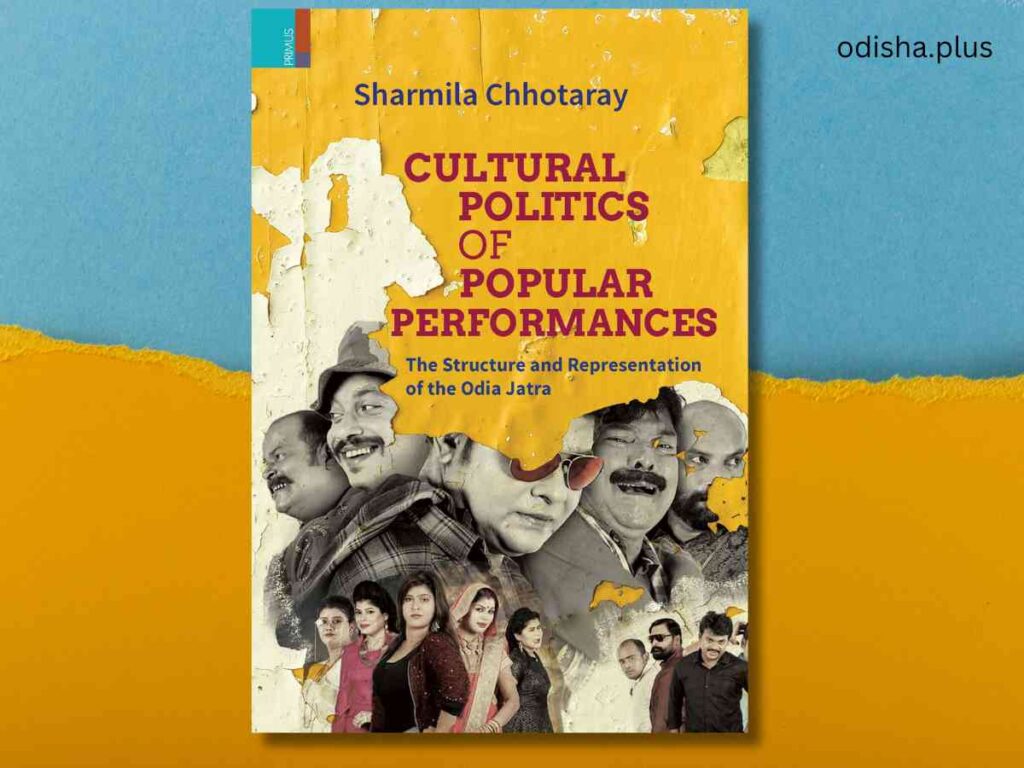In the context of Indian folk theater, Odia Jatra serves as a compelling example of cultural politics in action
Bhaskar Parichha

‘Cultural Politics of Popular Performances – The Structure and Representation of the Odia Jatra’
Sharmila Chhotaray
Primus Books
New Delhi
Cultural politics of popular performances examines how cultural expressions, particularly in the realm of entertainment, reflect and influence political dynamics. This concept is particularly evident in various forms of popular performances, such as theater, music and film, which often serve as platforms for political commentary and social critique. Popular culture encompasses the music, movies, and narratives prevalent in society, playing a significant role in shaping public opinion and political discourse.
In the context of Indian folk theater, Odia Jatra serves as a compelling example of cultural politics in action. This traditional form of theater has evolved from its folk roots into a mass entertainment genre that resonates with contemporary audiences while retaining its cultural identity.
Recent studies indicate that jatra has evolved in response to modernity through hybridization, enabling it to thrive within the capitalist entertainment sector. This evolution mirrors social transformations and interacts with the socio-political context of Odisha.
The book ‘Cultural Politics of Popular Performances – The Structure and Representation of the Odia Jatra’ by Sharmila Chhotaray presents a compelling examination of the Odia Jatra and its developmental traits. Sharmila Chhotaray served as an Assistant Professor in the Sociology Department at Tripura University. Her research primarily examines issues of identity within the realm of popular performance art. Presently, she is investigating the socio-cultural history of the widely recognized Bengali Jatra. Her research interests encompass gender studies, sanitation and the social history of the tribes in Tripura that are situated along the Bangladesh border.
Reads the blurb: ’The Structure and Representation of the Odia Jatra explores how, as a consequence of modernity, the hybridization of living theatre forms like jatra, allows ‘authentic’ folk traditions to not only survive but flourish by taking on new shapes without losing their traditional identity. The evolution of jatra from folk theatre in the pre-modern era to popular/mass theatre in modern Odisha has led to it attaining a dominant position in the entertainment industry. It is consumed by a large audience and is mediated by mechanisms of the capitalist market, surpassing the scale of modern Odia cinema.’
‘By responding to socio-cultural forces, it has expanded its cultural consumption, production & participation and now caters to the entertainment needs of the masses in both urban and rural areas. This book explores how this dominant form has revived mythological interpretations in modern, secular stories, thereby creating new spectacles in the countryside by producing a cinematic-hybrid culture in the changing social structure of modern-day Odisha.’
Jatra has transitioned from a traditional folk theatre form in pre-modern times to a widely embraced mass theatre in contemporary Odisha. It has now established itself as a leading entertainment sector, attracting a substantial audience and supported by a market that has surpassed modern Odia cinema.
The thriving jatra industry, referred to as ‘Jollywood,’ has initiated production units through innovative business ventures and has created a distribution network by forming jatra committees throughout the region.
Over 200 jatra troupes traverse both rural and urban areas of Odisha. One can often observe trucks laden with chairs, stage equipment and jatra performers at highways or bus stops, hurrying to their next venue to prepare for their performances. The vibrant fluorescent banners and posters displayed at every intersection and bus stop, along with the enticing titles of jatra plays, capture the attention of passersby.
Odia Jatra mixes modern themes with traditional stories, creating a cool combo that resonates with both city folks and those from the countryside. It’s not just about live shows anymore; it’s also making waves on TV and digital platforms, which really boosts its influence in society. The performances often tackle current social issues, keeping them relevant for today’s audiences and encouraging community involvement.
Political culture – the theme of the book – is all about the common attitudes and beliefs regarding politics in a society. It shapes how people see their role in the political landscape and affects how they engage with governance.
There are different types of political cultures—like participant, subject, and parochial—that show varying degrees of civic involvement and awareness among citizens. The relationship between cultural expressions like jatra and political culture highlights how performance art can either support or challenge societal norms and power dynamics.
What this publication seeks to examine is the themes of continuity and transformation within a widely recognized theatrical genre of jatra – the touring theatres in eastern India, with a particular focus on Odisha. Commonly referred to as gaṇanatya (where gaṇa signifies people and natya denotes drama or theatre), these theatrical troupes perform operas and nācas, traversing the state during the jatra season, which spans from late July to late May.
The cultural politics surrounding popular performances exemplifies the intricate interplay between culture and politics. Through the examination of forms such as Odia Jatra in conjunction with wider trends in popular culture, one can uncover how entertainment serves not only as a mirror to political realities but also as a catalyst for their formation. This continuous interaction between culture and politics is subject to evolution, adapting to societal transformations while simultaneously impacting public awareness.
Chhotaray’s book is a well-researched contribution that enriches the limited literature available on Odia Jatra.
(The author is a senior journalist and columnist. Views expressed are personal.)
#Book #BookReview #Theatre #Jatra #OdiaJatra #Art&Culture



























